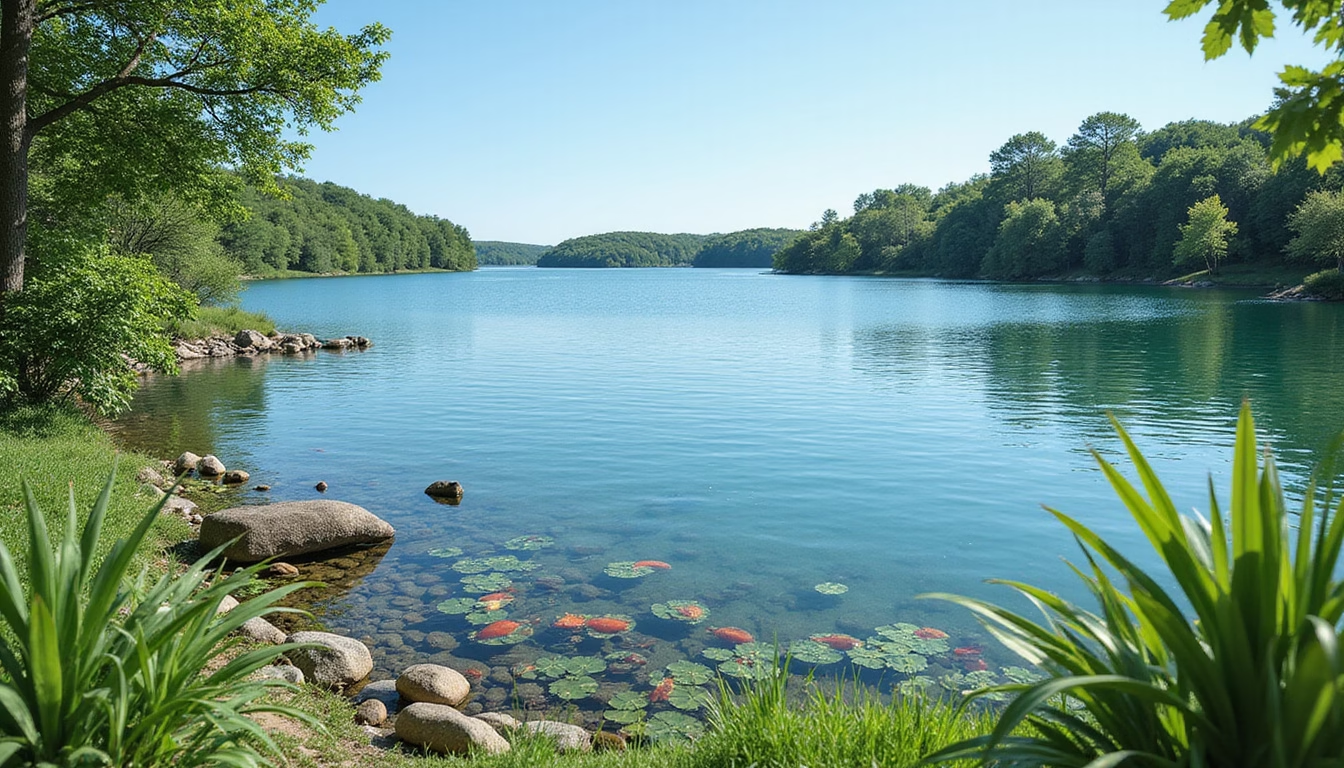
Top Invasive Species to Avoid Spreading in U.S. Lakes and Protect Our Ecosystems
On May 8, 2025 by Andy FordIn recent years, the health of U.S.
lakes has been under increasing threat from a variety of invasive species that disrupt local ecosystems and harm native wildlife.
Understanding the impact of these invaders, especially the top invasive species to avoid spreading in U.S.
lakes, is crucial for preserving biodiversity and maintaining the ecological balance.
This article will take a close look at the most notorious invasive species affecting our freshwater systems, the adverse effects they have on ecosystems, and crucial strategies for preventing their spread.
Mastering Saltwater Fishing: A Complete Guide to Choosing the Right Fishing Line

Key Takeaways
- Invasive species pose a significant threat to the biodiversity of U.S. lakes.
- Species such as zebra mussels and Eurasian watermilfoil rank among the top invaders to avoid.
- The impact of invasive species includes disrupting food chains and altering habitats.
- Preventing the spread of invasives involves proper cleaning of boats and gear before moving to new lakes.
- Raising public awareness and education is crucial to protecting ecosystems from invasive species.
Understanding Invasive Species
Understanding invasive species is crucial for preserving the ecological balance within U.S.
lakes.
Invasive species can drastically alter aquatic ecosystems, outcompeting native species for resources, and can lead to significant environmental and economic impacts.
Among the most notorious invasive species to avoid spreading in U.S.
lakes are the zebra mussel, which clogs waterways and disrupts local fish populations, and the Eurasian watermilfoil, a rampant aquatic plant that can choke out native vegetation.
Additionally, species like the Asian carp threaten native fish populations and recreational activities.
It is essential for lake enthusiasts, conservationists, and policymakers to recognize the signs of these invasive species and take proactive measures to prevent their spread.
Implementing strict inspection protocols, promoting public awareness campaigns, and supporting biological control initiatives are effective strategies for managing these unwelcome visitors.
By understanding and addressing invasive species, we can better protect our lakes and the biodiversity that thrives within them.
Top Invasive Species Threatening U.S. Lakes
When it comes to protecting the ecological integrity of U.S.
lakes, understanding and addressing invasive species is crucial.
Among the top invasive species threatening U.S.
lakes, the zebra mussel tops the list due to its rapid reproduction and ability to clog waterways, disrupting local ecosystems.
Another notable invader is the Asian carp, which can outcompete native fish for resources, leading to a drastic reduction in biodiversity.
The water hyacinth, a floating aquatic plant, can choke the life out of lakes by blocking sunlight and depleting oxygen levels.
To combat these invasive species and prevent their spread, it is paramount for conservationists and the public to take proactive measures, such as cleaning boats and equipment before moving between water bodies.
By raising awareness and adopting preventative practices, we can help mitigate the threats posed by invasive species to our precious lakes.
‘We won’t have a society if we destroy the environment.’ – Margaret Mead
Mastering Saltwater Fishing: A Complete Guide to Choosing the Right Fishing Line

How Invasive Species Impact Ecosystems
Invasive species have become a significant threat to ecosystems across the United States, particularly in lakes where they can disrupt local biodiversity and water quality.
When discussing invasive species to avoid spreading in U.S.
lakes, it’s crucial to understand how these organisms can outcompete native species for resources, leading to ecological imbalance.
For instance, species such as the Zebra Mussel and Asian Carp have not only altered the food web but have also caused economic damage by clogging water intake systems and affecting recreational activities.
Educating the public about these invasives and their impacts on native ecosystems can play a vital role in preventing their spread.
Control measures such as regulations, public awareness campaigns, and responsible boating practices can significantly mitigate the risk of these harmful species infiltrating pristine bodies of water.
Thus, being informed about the invasive species to avoid spreading in U.S.
lakes is essential for the preservation of aquatic ecosystems.
Preventing the Spread of Invasive Species
Preventing the spread of invasive species is crucial to preserving the ecological balance of U.S.
lakes.
Invasive species often outcompete native plants and animals for resources, leading to significant biodiversity loss.
To combat this issue, it is vital to understand the specific invasive species to avoid spreading in U.S.
lakes.
Common culprits include the zebra mussel, Eurasian watermilfoil, and Asian carp, each posing unique threats to local ecosystems.
To minimize their impact, boaters and anglers should thoroughly clean and dry their equipment before moving between different bodies of water.
Implementing effective management strategies, such as educating the public on recognizing invasive species and reporting their sightings, can significantly contribute to preventive measures.
By taking these proactive steps, we can safeguard our lakes and ensure the health of their habitats for generations to come.
Frequently Asked Questions
What are invasive species and why are they a problem in U.S. lakes?
Invasive species are non-native organisms that, when introduced to new environments, can outcompete native species, disrupt ecosystems, and cause ecological and economic harm.
In U.S.
lakes, their presence threatens biodiversity and can disturb water quality.
What are some examples of the top invasive species to avoid in U.S. lakes?
Some top invasive species to avoid include the zebra mussel, Asian carp, purple loosestrife, and water hyacinth.
These species have shown rapid growth and can severely impact aquatic ecosystems.
How do invasive species impact ecosystems in U.S. lakes?
Invasive species can lead to the decline of native species by competing for resources, spreading diseases, and altering habitats.
This disruption can lead to a decrease in biodiversity and affect the overall health of lake ecosystems.
What can individuals do to help prevent the spread of invasive species in U.S. lakes?
Individuals can help by cleaning boats and gear before moving between lakes, reporting sightings of invasive species, and educating others about the importance of preventing their spread.
Are there any regulations in place to manage invasive species in U.S. lakes?
Yes, many states have regulations aimed at managing and preventing the spread of invasive species.
This can include restrictions on transporting certain species and public awareness campaigns.
100% Free Ai trading Bot Click here for yours!
